How does the ENFJ personality fit into the Big Five personality traits?
Reading time: 5 minutes

Gregory Park, Ph.D.
Author
In personality studies, scientific researchers often use a trait-based approach to describing the differences between people instead of using personality types. The most well-established method is the Big Five, which describes differences along five broad dimensions:
Personality types can be thought of as a very rough approximation of someone’s combination of underlying personality traits. Two people with the same personality type will be somewhat similar on these dimensions, but no two people will be exactly the same.
ENFJs tend to share a similar combination of traits, so as a group, they also share some common patterns of thinking, behaving, and relating to other people.
In the graph below, you can see where ENFJs fall along each of the Big Five dimensions. Every dot is an individual ENFJ, and darker blue areas means more ENFJs fall in that area.
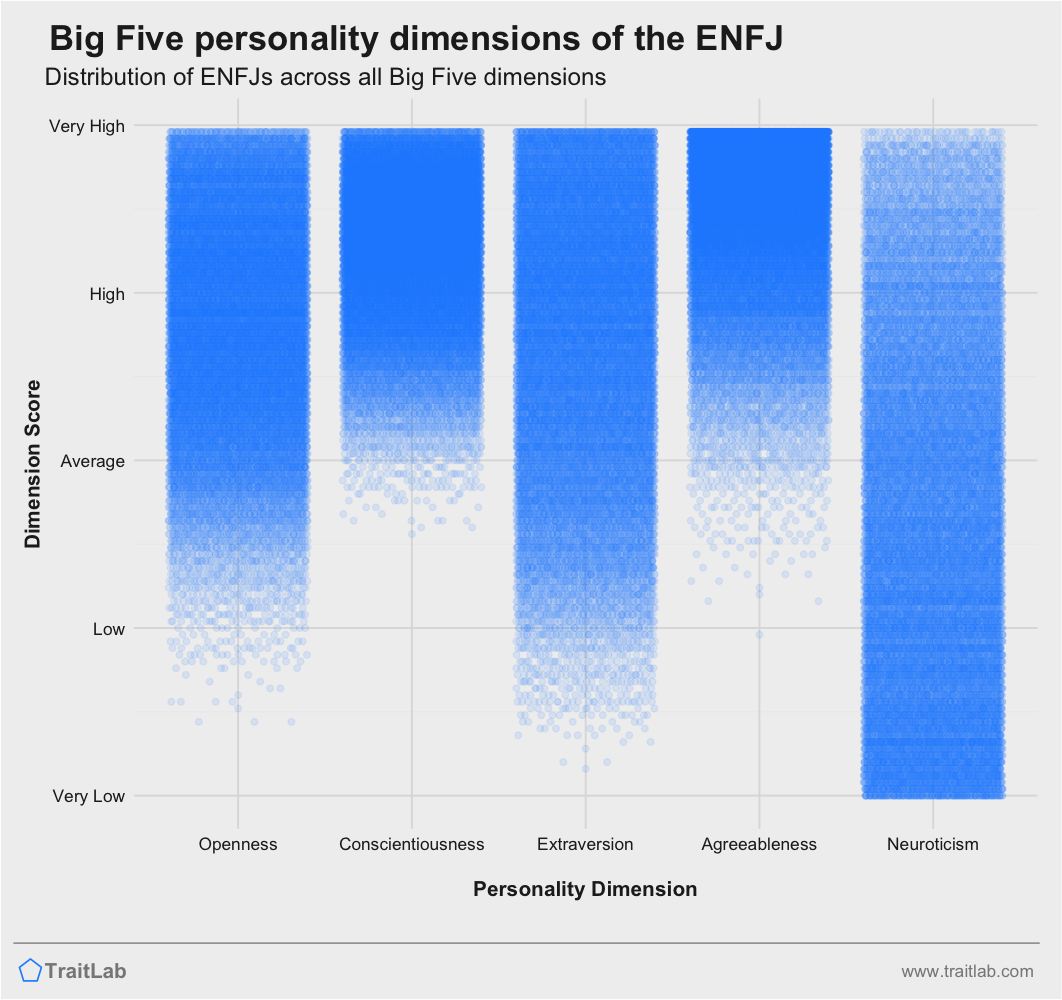
Take the dimension of Agreeableness. Most of the dots are crowded along the higher end of the dimension, meaning that most ENFJs fall on the high end of Agreeableness. There are a few outliers that fall below the average, but most tend to be well above average.
By analyzing where ENFJs fall along each dimension, we can build a picture of what kind of combinations of traits ENFJs are likely to have in general. This is useful for profiling a personality type, but for any particular individual, it is always more accurate to directly measure their personality dimensions, which is exactly what TraitLab’s personality assessment does.
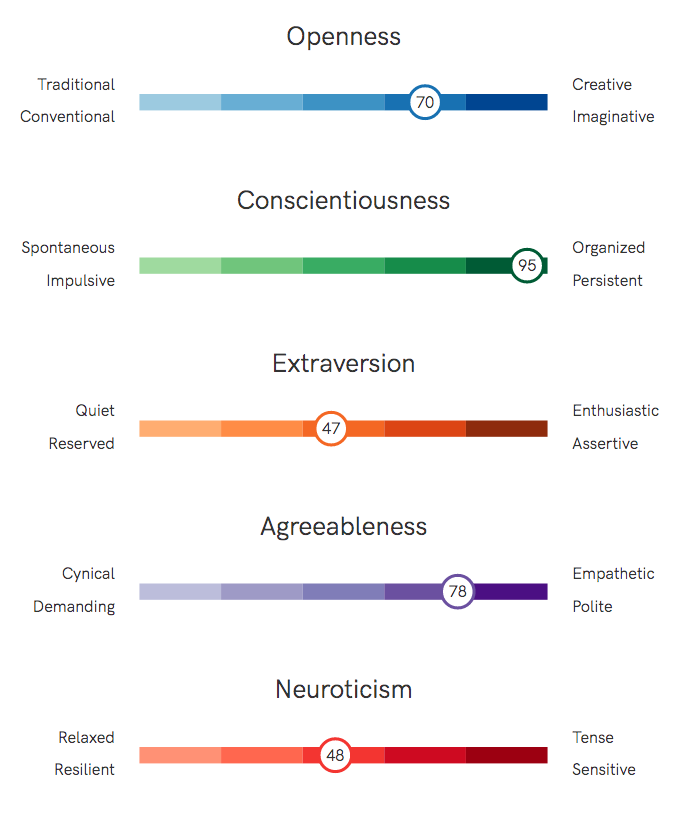
Do you know your Big Five?
Learn about your personality traits and so much more with TraitLab's comprehensive assessment.
ENFJs are often high on Openness to Experience.
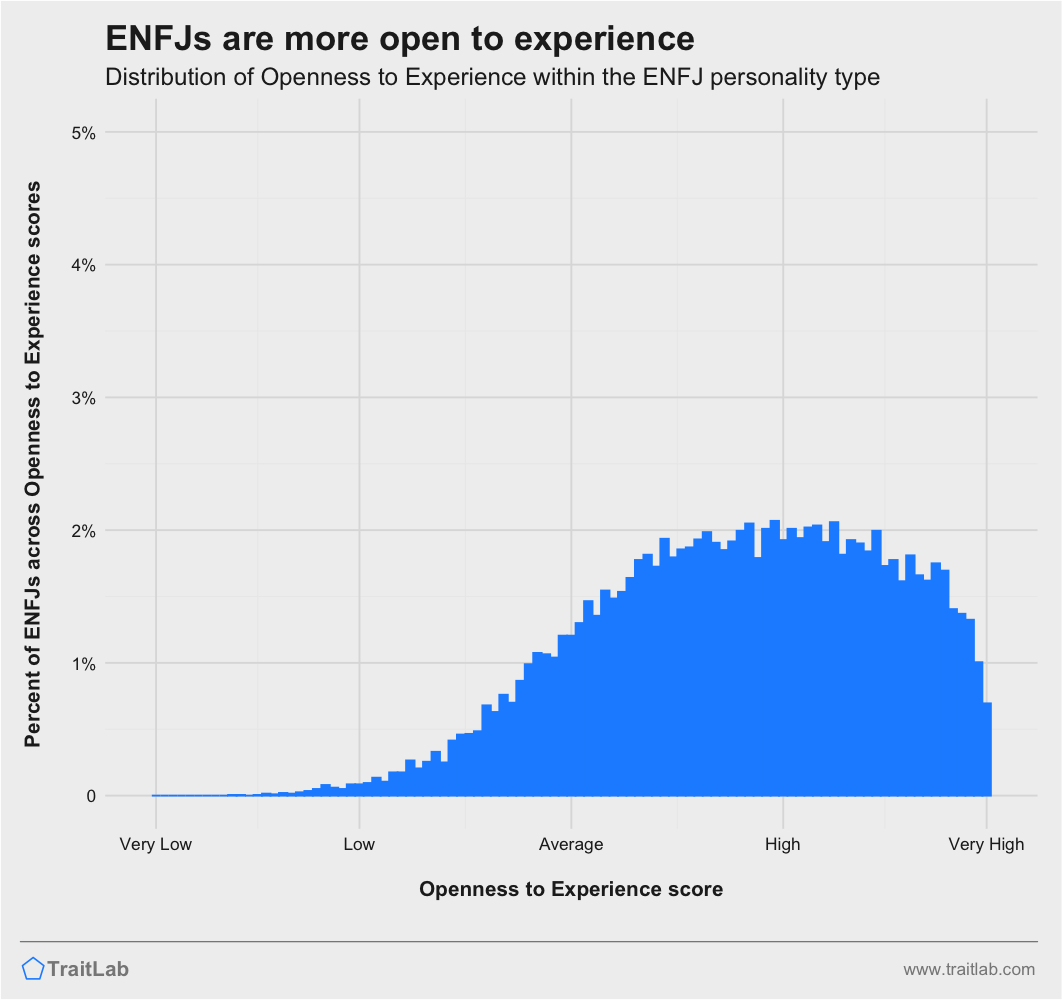
Most ENFJs are well above average on Big Five Openness to Experience. Openness to Experience describes a preference for seeking out new information and novel experiences, instead of the familiar.
Being highly open, many ENFJs will have a wide range of interests and enjoy learning new things. They will be more excited about trying new things, and may carry conversations towards more abstract and philosophical topics. They are also more likely to be absorbed by and deeply affected by music, books, films, and other art forms.
ENFJs tend to be highly conscientious.
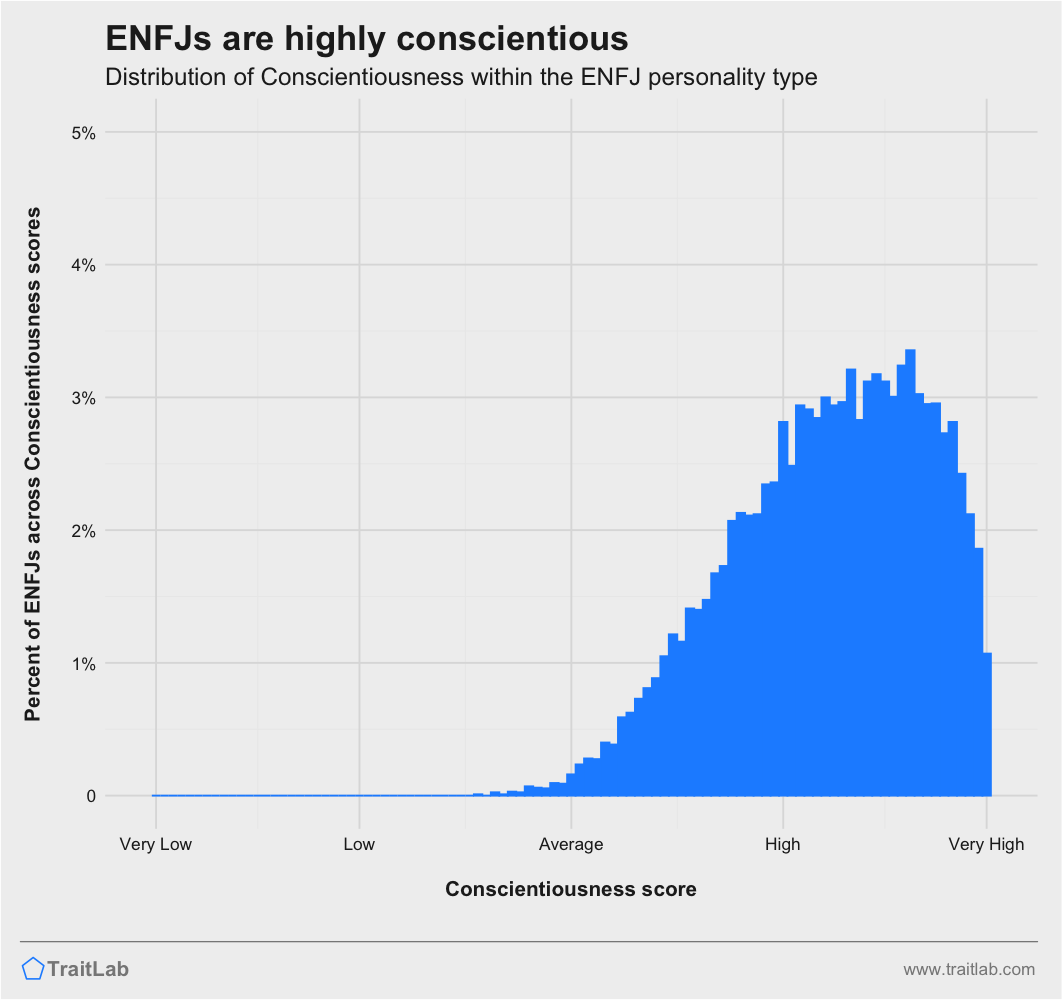
ENFJs are often quite high on Big Five Conscientiousness, with a large portion of ENFJs falling at the highest end of the scale.
Conscientiousness describes our planning, organization, and regularity. Highly conscientious people, like most ENFJs, tend to create detailed plans to accomplish their goals and stick closely to them. They are less likely to be distracted by diversions or smaller short-term goals, and they excel at maintaining focus on the big picture.
Many ENFJs will have a regular schedules and routines to ensure that they can efficiently make progress on multiple goals. They will have little tolerance for disorganization and chaos, and will work diligently to create order out of a messy situation.
ENFJs are generally more extraverted, although there are a few exceptions.
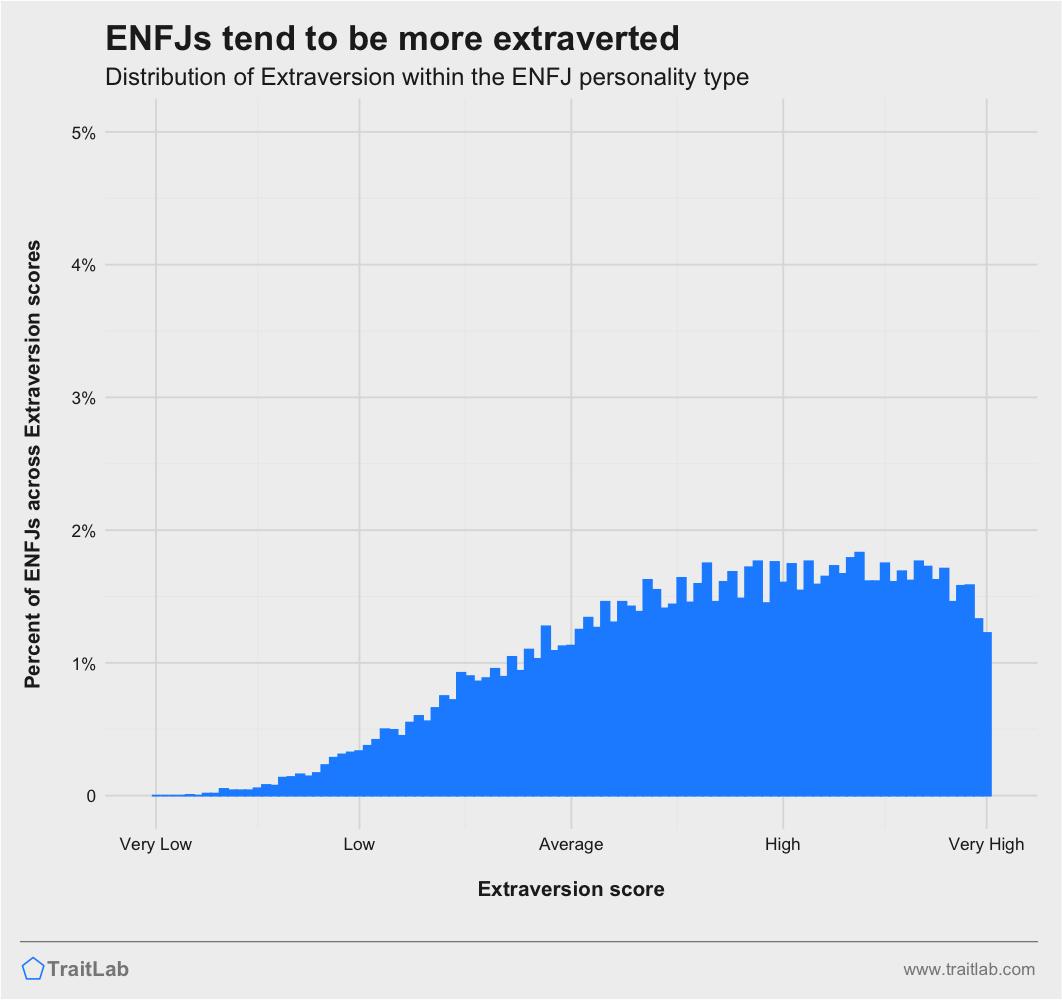
Most ENFJs are somewhat more extraverted, but about 25% of ENFJs actually fall below average on Extraversion. Extraversion describes our social enthusiasm, positive emotionality, and assertiveness.
More extraverted ENFJs will naturally gravitate towards social engagement and generally show greater enthusiasm in social situations— smiling, laughing, and keeping the energy up and moving. They will be more likely to open up, share their point of view, and gently persuade others to see things their way.
The rarer, more introverted ENFJs will seem more emotionally muted and reserved compared to their extraverted counterparts. They will act and react more subtly in social situations, and will occasionally need to withdraw into solitary activities. They are more likely to sit back and listen, and act more passively around others.
If you think you are an ENFJ but are curious about exactly where you fall on the Extraversion spectrum, just try the free Big Five test to see exactly how extraverted you really are.
ENFJs tend to be very highly agreeable.
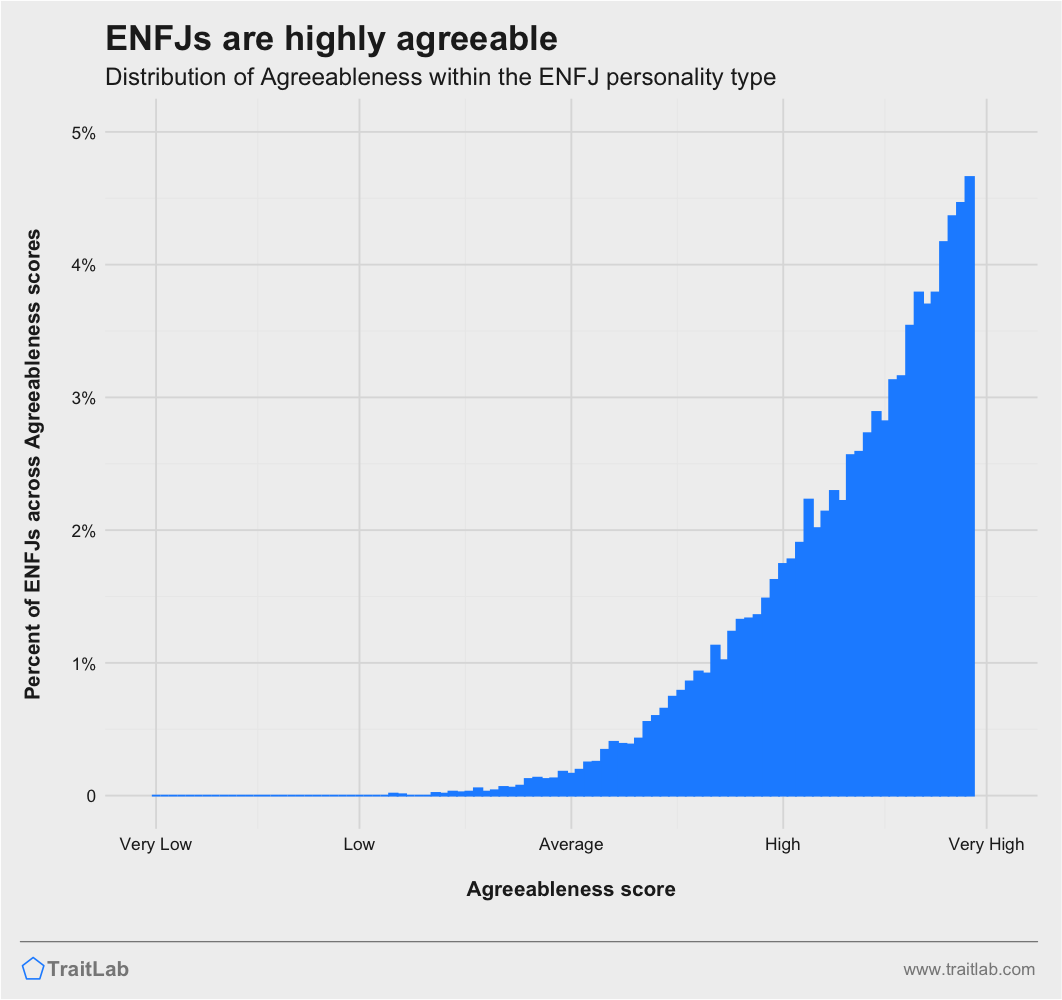
As a group, ENFJs are consistently very agreeable, with many ENFJs falling at the extreme high ends of Agreeableness. Agreeableness describes tendencies to create and nurture positive relations with others, a general sense of trust in other people, and empathy — the capacity to sense and feel the emotions of others.
Highly agreeable people, like most ENFJs, are highly sensitive to interpersonal issues, and will try to minimize any negative impact their actions may have on other people. ENFJs are more likely to put off their own goals if it could potentially disrupt or harm a good relationship, and if an ENFJ senses distress or other interpersonal problems, they will naturally jump at the chance to comfort and resolve it.
ENFJs can vary widely in their individual level of Neuroticism.
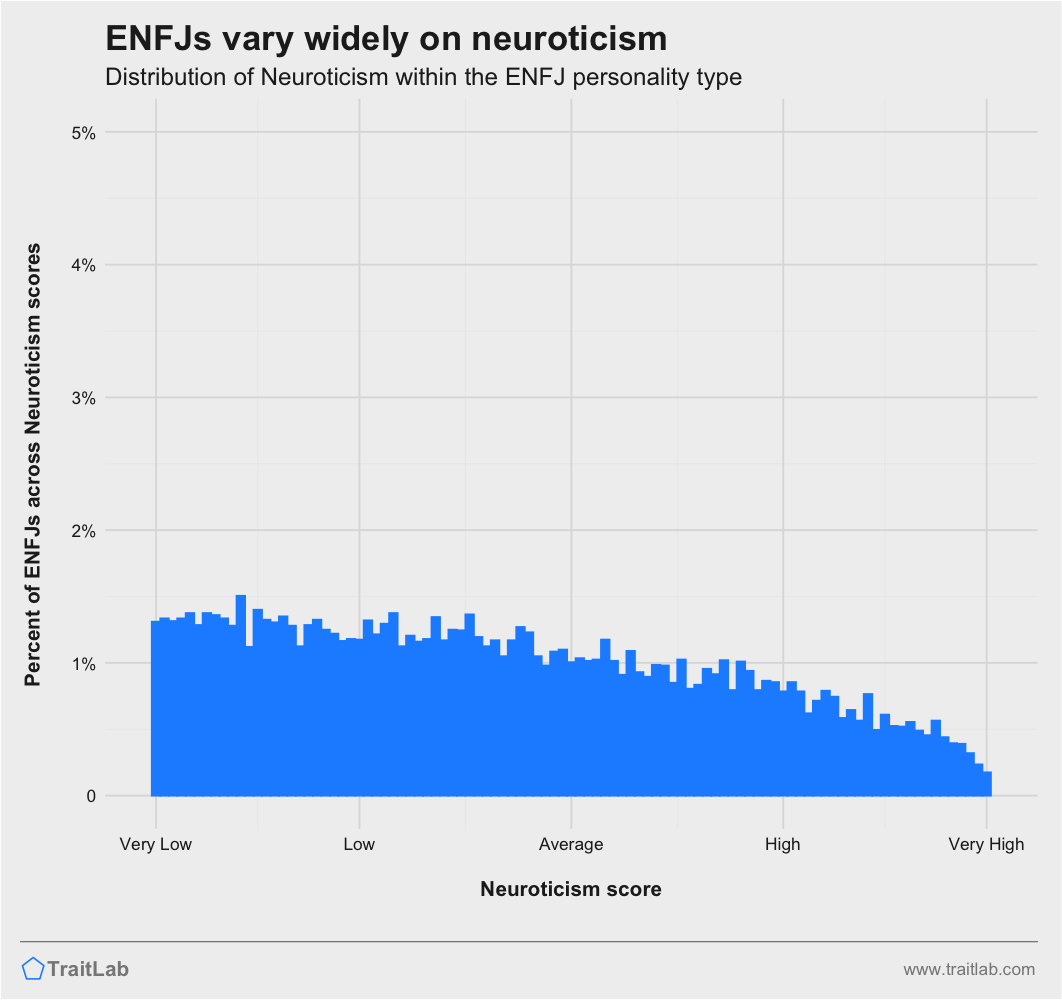
ENFJs can be almost anywhere on the range of Neuroticism or Emotional Stability. That is, one ENFJ may be very high (neurotic), another may be very low (emotionally stable), and others will fall somewhere in between.
Neuroticism describes one’s emotional volatility and tendencies under stress. More neurotic ENFJs will have wider and more frequent mood swings, may be touchier and more easily bothered by things in general. More neurotic people are more likely feel and express negative emotions, as well, such as anger, anxiety, sadness, and frustration.
Less neurotic ENFJs will be more emotional stable, will have more predictable moods, and generally react less to stressful situations. They will be more calm, collected, and less self-conscious, and will experience negative emotions less often and with less intensity.
You can always measure your own level of Neuroticism with TraitLab’s free personality test, along with the other Big Five dimensions.